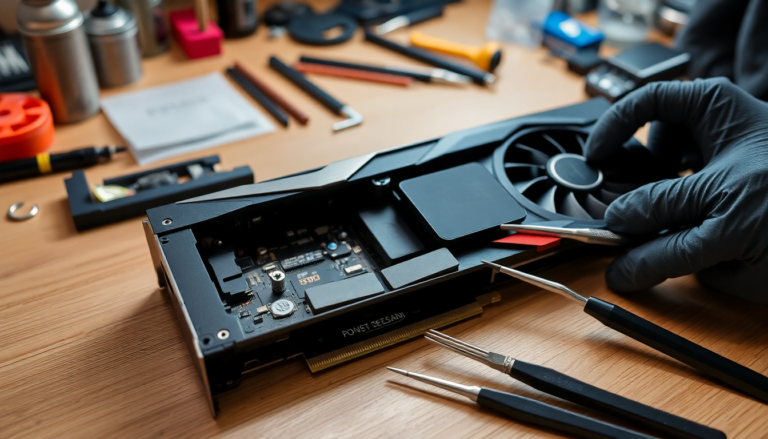Argomenti trattati
Thermal management is a crucial aspect of maintaining optimal performance in graphics cards. Recently, the Aorus Radeon RX 9070 XT Elite 16G has garnered attention due to its thermal pad replacement potential, particularly in light of previous concerns regarding thermal gel leakage from other models. Understanding how to effectively switch to thermal pads can not only enhance cooling performance but also offer peace of mind for users wary of thermal gel issues.
Understanding thermal gel and its challenges
Gigabyte’s decision to use thermal conductive gel in their latest graphics cards has received mixed reviews. While thermal gel is intended to provide efficient heat transfer, instances of leakage have been reported, especially in vertically installed cards. This led to negative feedback from customers who experienced overheating issues. Gigabyte has since acknowledged the problem, indicating that early production runs used too much thermal gel, which could create complications. They’ve assured users that adjustments have been made to the application process, yet the concern remains for those who own affected models.
The video demonstration and process
A recent video by a content creator on Bilibili, highlighting the process of replacing Gigabyte’s thermal gel with standard thermal pads, has sparked interest among tech enthusiasts. Using the Aorus Radeon RX 9070 XT Elite 16G as a case study, the creator demonstrated how to safely remove the existing thermal gel using isopropyl alcohol and a paper towel. The meticulous scraping away of any residue was performed with a plastic spudger, ensuring that the surface was clean before applying the new thermal pads.
The creator opted for Gilson HD800 and HD1200 thermal pads, which have thermal conductivity ratings of 8 W/mK and 12 W/mK respectively. While the HD800 offers decent performance, it may not be the best option available. The creator highlighted that the choice of thermal pads can significantly impact cooling efficiency, especially when considering the specific thickness required for various components.
Optimal thickness for effective cooling
When it comes to thermal pads, thickness is a critical factor in ensuring optimal cooling. The creator provided detailed measurements for the thermal pads used in the video. For example, the GDDR6 memory chips required 1.25mm thick pads, while the chokes needed 1.5mm thickness. It is essential to choose the right thickness; too thin pads may not provide adequate contact, while overly thick pads can create pressure issues that hinder performance.
Moreover, each brand of thermal pads has unique properties regarding softness and mounting pressure. Therefore, users should carefully consider the brand they choose and ensure compatibility with their specific graphics card model. The nuances of thermal management are often overlooked, yet they play a vital role in the longevity and efficiency of the components.
Performance improvements post-replacement
Prior to the replacement, the Aorus Radeon RX 9070 XT Elite 16G was operating at a fan speed of 42%, with core temperatures reaching 56 degrees Celsius. After switching to the new thermal pads, the fan speed reduced to 40%, and the core temperature dropped to 53 degrees Celsius. Interestingly, the hot spot temperature only slightly decreased to 87 degrees Celsius, while VRAM saw a more significant cooling effect, reaching 78 degrees Celsius.
This improvement highlights an often overlooked fact: many graphics cards suffer from inadequate cooling for memory chips. By upgrading to thermal pads, users can not only enhance the cooling of their GPUs but also reduce noise levels, providing a more pleasant gaming and computing experience.
The final thoughts on thermal pad replacements
If you own an Aorus Radeon RX 9070 XT Elite 16G from a later batch, the chances of thermal gel leakage are minimal, as Gigabyte has made necessary adjustments to their manufacturing processes. However, if you encounter any issues, it’s advisable to reach out to Gigabyte for further assistance. The demonstration provided by the Bilibili creator serves as a testament to the feasibility of replacing thermal gel, and for many, it opens the door to a quieter, cooler graphics card experience. Engaging in such upgrades can be a rewarding endeavor for tech enthusiasts looking to optimize their systems.

